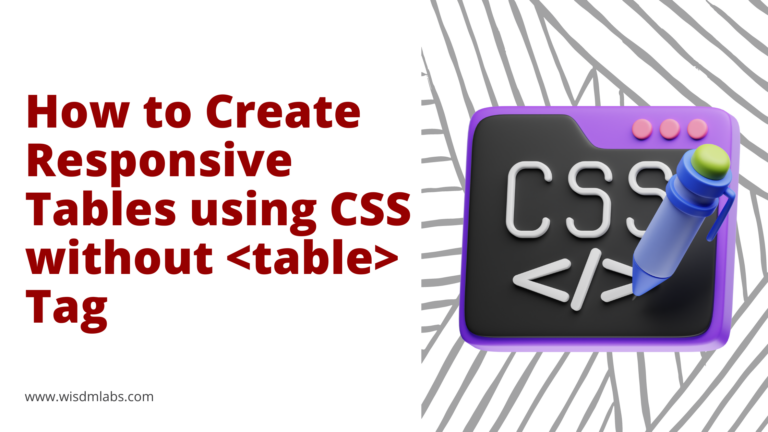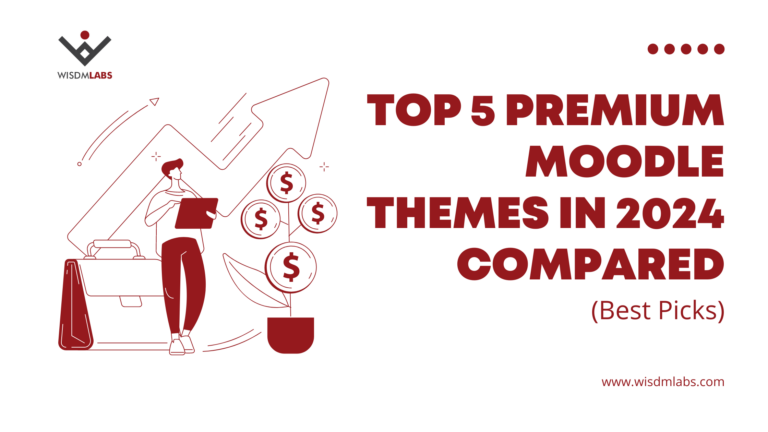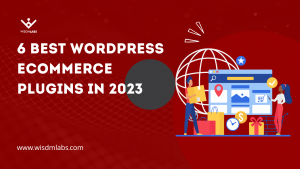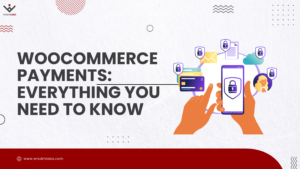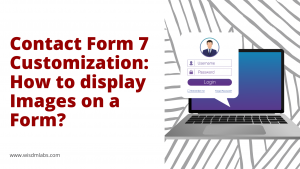In our previous blog, we had compared Shopify and WooCommerce in depth – talking about the pros and cons of each. As we had discovered, both the platforms had some great offerings for users wanting to ace their e-commerce game. Nonetheless, it so happens that WooCommerce is the most preferred platform world over for businesses, commanding a whopping 30% of the market. This might motivate you to migrate your store from Shopify to WooCommerce, given the innumerable number of advantages WooCommerce has.
Why should you migrate from Shopify to WooCommerce?
A few reasons why users prefer WooCommerce over Shopify are mentioned below.
- Cost Implications – WooCommerce is hands down cheaper than Shopify, mainly because it is built on top of an open-source platform like WordPress. A basic Shopify subscription will set you back by $29, and further offerings go up to $299 on a monthly basis. This doesn’t include costs for extra add-ons. In comparison, the WooCommerce plugin is free. You may have to pay some fees for domain name, hosting, security, etc. – but even these are cheaper (a minimum of $15 a month). If you already have a WordPress site, this becomes even cheaper.
- Flexibility and Customizations – Both WordPress and WooCommerce are open-source – essentially, anyone has the freedom to copy, modify, or change the source code to have a store you exactly want- something you can’t do on Shopify. In addition to that, WordPress’s free plugin repository consists of over 54,000 free options which becomes even better with WooCommerce’ extension marketplace with over 300 add-ons for online stores. Customizability with no limits.
- Transaction fees – Unlike Shopify, WooCommerce doesn’t charge transaction fees on your sales done via other payment gateways. Unless you use Shopify Payments, you’ll end up paying a surplus on Shopify (which goes to as little as 2% for third party payment gateways).
- SEO benefits – WooCommerce is built on WordPress, which is known for its strong SEO capabilities. As a successor to a mighty blogging platform, it is inherently built on a code-optimized basis, great for on-page SEO. With WooCommerce, you have access to a wide range of SEO plugins and tools available through the WordPress ecosystem. The Yoast SEO plugin is probably the most famous one of the lot, used by millions of sites worldwide
There are many other factors that make WooCommerce the more popular choice for e-commerce enthusiasts. Check out our previous blog to learn all about them.
In today’s blog, we will elucidate the steps you can take to migrate from Shopify to WooCommerce using various methods – all in a manner which you can actually implement. Let’s deep dive.
What are all the data elements involved in store migration from Shopify to WooCommerce?
Migrating a store from Shopify from WooCommerce contains migration of the following elements.
- User accounts – their username, login details, email addresses and other data saved in Shopify
- Products – their description, prices, images, categories and other details
- Orders – Past orders history
- Subscriptions – Shopify Recharge or Bold subscriptions history
- Coupons
- Pages and Blogs
What are the prerequisites before you migrate from Shopify to WooCommerce?
If you already have a functional WordPress site, or a WordPress site with WooCommerce added to it, then most of your task is already cut out. In case you haven’t already done this, then make sure you execute the following things before moving ahead.
- Find a WordPress-friendly web hosting provider for your Content Management System (CMS) and choose a plan. There are many service providers for this. Find some here. We recommend using Host Armada.
- Back up your Shopify store to prevent data loss during the transition. Shopify doesn’t offer backup functionality in general, so you may use tools from the Shopify App store like Rewind Data, or manually by exporting data in the form of CSV files.
- The next step is obviously to install WordPress. Most hosting companies provide one-click WordPress installation, so check that out. Alternatively, download and set up WordPress yourself, which is actually quite simple.
- Post that, you need to install WooCommerce from WordPress plug-ins, and set up your store. This will involve picking a theme and customizing your store, which you can do using the WooCommerce Theme Forest.
Note: The WooCommerce Set-Up wizard will guide you through the entire setup process. You can virtually do everything using it – from setting up taxation charges, and shipping preferences, to payment methods and more. These are the primary settings, and you can change them anytime you want. Post the completion of set-up, a WooCommerce tab appears in the navigation panel, wherein you can make changes to various WooCommerce settings like checkout, customer preferences, products, etc.
Finally, you may want to add additional plug-ins to extend the functionality of WooCommerce.
Post all these, you are all set for the final step – migrate from Shopify to WooCommerce.
How to migrate from Shopify to WooCommerce?
There are 3 steps broadly which you can use to migrate your site from Shopify to WooCommerce
- Migrate from Shopify to WooCommerce manually
- Migrate store data from Shopify to WooCommerce using a tool/plugin
- Hiring an expert WooCommerce developer to migrate from Shopify to WooCommerce
We will take a look into each of these steps.
Manually Migrate from Shopify to WooCommerce
Manual migration refers to the fact that the user, in this case you, literally exports all your data – including products, orders, users, their payment information, etc. from your Shopify and imports it on your WooCommerce setup. WooCommerce has a default product CSV importer that makes it quite easy for importing your products, provided all data has been mapped correctly across both the platforms.
The process looks very simple, at least on paper.
- Export all your data from Shopify and download and save them as separate CSV files – for Products, Orders, Users and so on.
- Go to WooCommerce > Products.
- Select Import. This is the native WooCommerce Product Importer.
- Choose the file you exported from Shopify and want to import to WooCommerce and click Continue.
- Make sure that all your data is mapped correctly, as per the WooCommerce format. This part is the most tricky. WooCommerce tries to automatically map the fields from the CSV file to WooCommerce’s native ones, but you might need to make a few changes in the Column Mapping if required.
- Run the importer and complete the process.
- Now, similarly, migrate the CSVs of other elements also like Orders, Customers Reports, etc.
Note: WooCommerce doesn’t import product images – it has to be done manually. Also check that you are not missing any critical information. In case of omitted data, rerun the importer and map the correct fields to WooCommerce. Although manual migration is inexpensive, it is not recommended for users without in-depth knowledge of the backend. Any act of omission and commission may severely impact your site performance.
Migrate From Shopify to WooCommerce – Using Tools & Plugins
You will also find many plugins and tools that help you migrate your content from Shopify to WooCommerce, quite seamlessly.
Some of the most popular ones include:
These tools have a default migration protocol which helps you transfer all your existing data – users, products, orders, etc. from Shopify to WooCommerce. The main advantage with these tools is the fact that even during the migration process, your existing store keeps running with zero downtime.
The process is quite similar to migrating your products manually;
- Install the plugins, and set-up the Connection Bridge between your old store on Shopify and the new one on WooCommerce using the URL, API, and Password.
- Select all the data you want to migrate to the new site and map it to the appropriate WooCommerce fields
- Launch the migration and wait for it to complete successfully
Note: The disadvantage here is that these tools are usually a one-fits-all kind of a solution, with no consideration for the unique requirements of your website. Most WooCommerce migration plugins have a standard migration process, billed by the number of orders or products you might have. While this is a feasible solution for smaller stores, it can get expensive really quickly with larger e-stores with thousands of products and product variations.
Note : Migrating subscriptions from Shopify to WooCommerce involves a different level of complexity. In order to have an idea on the same, refer to our in-depth blog on subscription migration from Shopify to WooCommerce.
Migrate from Shopify to WooCommerce – Through Experts
Probably the most convenient method to migrate from Shopify to WooCommerce is by leveraging the expertise of WooCommerce Experts. Considered to be one of the easiest and safest options, an official WooCommerce Expert is not only trustworthy, reliable, and efficient, but also saves you a lot of time and effort on the transitions.
Although not the cheapest method out there, it is certainly the safest approach.
As trusted WooCommerce experts and official migration partners, with over 3000+ projects under our belt, we at WisdmLabs have always strived to deliver the best results for our clients, no matter what the challenges are.
Feel free to reach out to us for a fail safe migration or if you need any assistance during the process.
Post Author

Nishant Nihar is the Content Head at WisdmLabs. He’s a skilled writer, quizzer, and technology enthusiast who’s passionate about helping his readers navigate through the WordPress space.

Shamali Sulakhe is a Tech Leader in WisdmLabs. She is a skilled WordPress consultant and likes to share knowledge across the WordPress community.

Nitansha is a Content Marketer at WisdmLabs. She loves writing and is determined to help readers navigate the WordPress ecosystem.


